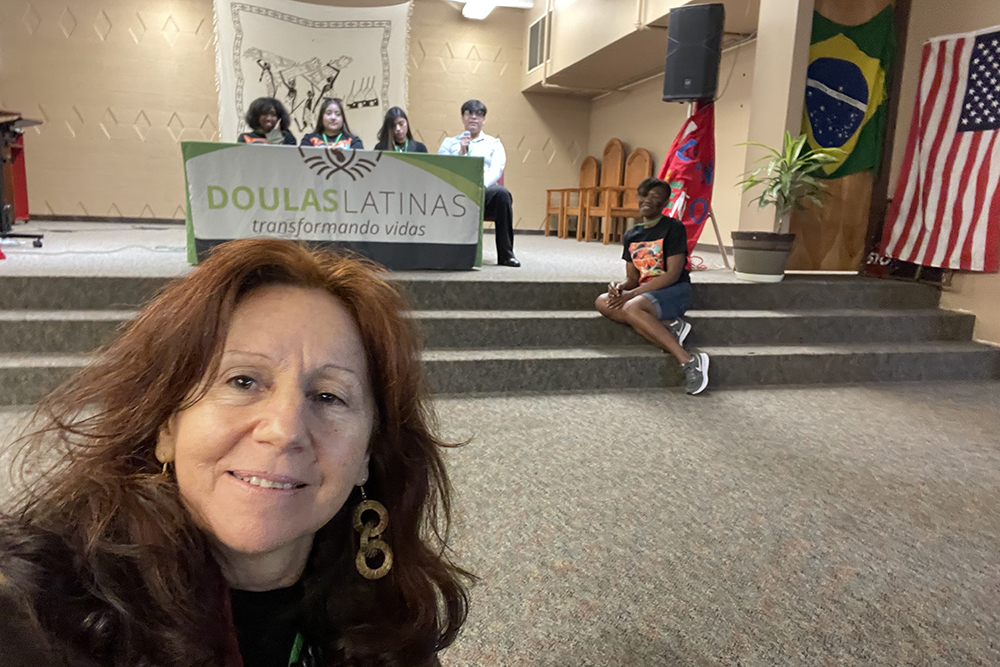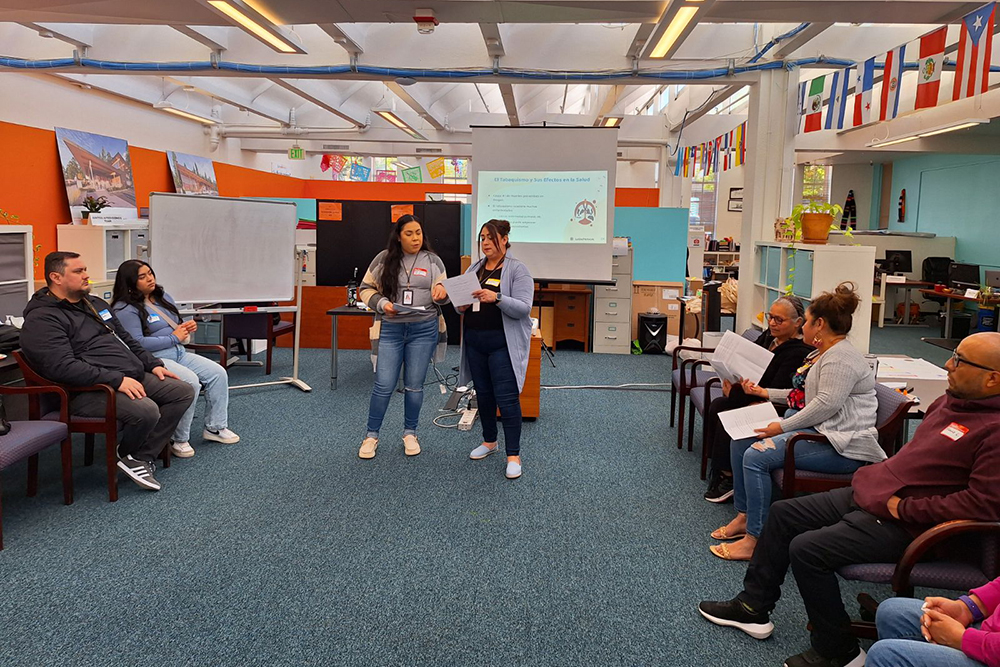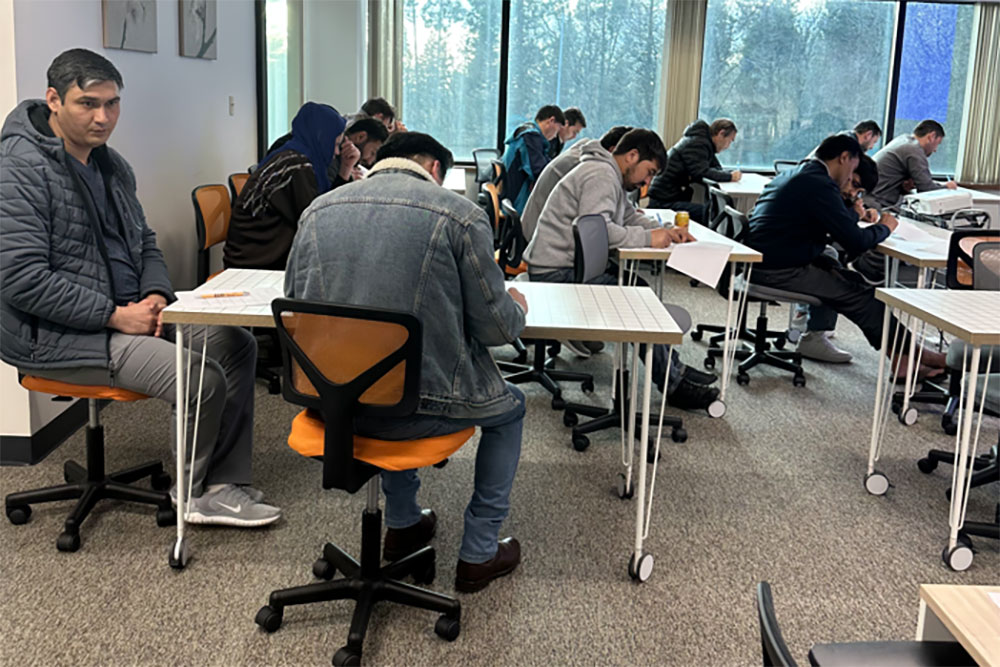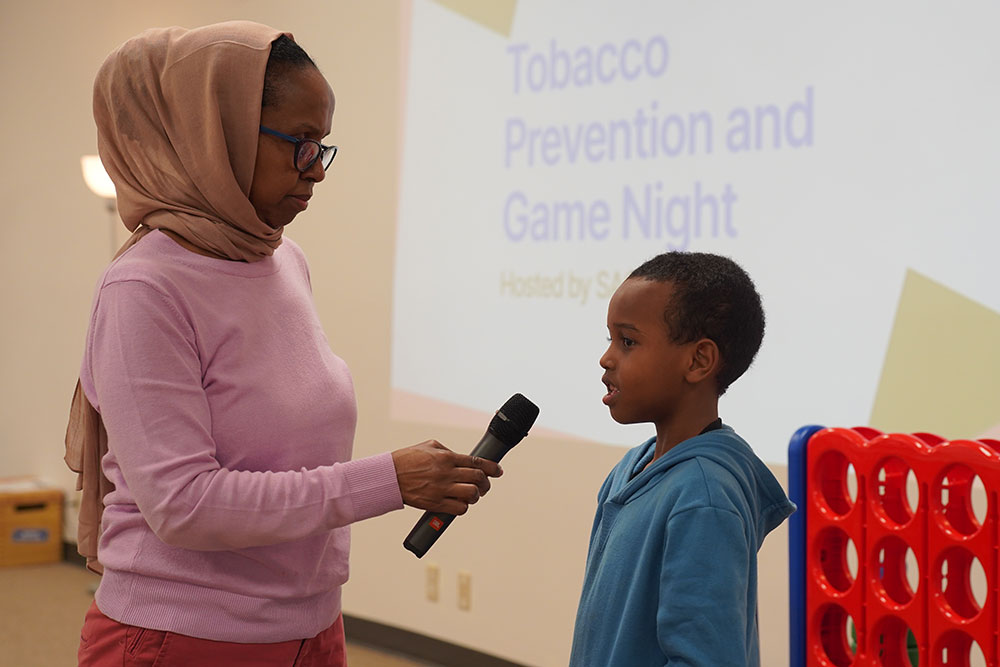Commercial tobacco (like cigarettes, e-cigarettes, cigars and smokeless tobacco) is the leading cause of preventable death and disease in Oregon.
While there has been progress in reducing cigarette smoking and related diseases over the past few decades, there are some groups that use commercial tobacco at higher rates. This includes young people, people who live in low-income communities and communities of color, including people who are African American or Black, Hispanic or Latino, American Indian and Alaska Native or Asian.
To support the communities most affected by commercial tobacco, Clackamas County Public Health Division’s Tobacco Prevention and Education Program (TPEP) partnered with Washington County Public Health’s TPEP to offer the Clackamas and Washington Counties Commercial Tobacco Prevention Grant. This grant funded culturally and linguistically diverse community-based organizations to address the root causes of commercial tobacco use and related health issues.
“Root causes” are the underlying reasons why communities may use commercial tobacco at higher rates or experience health issues related to tobacco use. They include factors such as policy, access to healthcare, mental health, employment, food access, housing, public safety, adverse experiences and more.
Of the 29 applications received, seven organizations were awarded $50,000 to implement their respective programs between January 2024 and June 2025.
The projects
African Refugee Immigrant Organization (ARIO)
ARIO empowered youth to co-create a culturally specific commercial tobacco prevention curriculum that addressed misconceptions about commercial tobacco and khat, a leaf that is chewed to produce a stimulating effect, among the African immigrant and refugee community. Community surveys were used to identify topics for the youth-led curriculum. The curriculum was then used for workshops, which educated the community about the harms of commercial tobacco, offered stress management strategies and provided a space for community connection.
Doulas Latinas International
Doulas Latinas International facilitated “Charlas en Confianza” (“Chats in Confidence” in English) discussions to learn more about health issues in Latine communities. Groups discussed tobacco prevention in the context of schools and at home, the relationship between financial stress and commercial tobacco use, the cultural context of commercial tobacco and how to advocate for policies that improve health outcomes. As the discussions concluded, Doulas Latinas youth did a panel presentation to share more about their experiences with commercial tobacco and their perspective on how to prevent future youth use.
Latino Network
Latino Network bolstered the Latine Community Health Worker (CHW) workforce by equipping them with training on commercial tobacco use and related harms, to help promote tobacco-related conversations between CHWs and their clients. Latino Network also provided culturally and linguistically specific messaging and education to Latine youth and families through a social media campaign and community workshops. For individuals who expressed interest in quitting or reducing their use of commercial tobacco, Latino Network supplied them with a kit to support them in their cessation journey.
Living Islands Non-Profit
Living Islands Non-Profit expanded its culturally specific data collection efforts to understand the root causes of commercial tobacco and betel nut (a fruit that can be chewed for stimulating effects) use in Native Hawaiian and Pacific Islander communities. The data collected through surveys and focus groups was shared back with the community in a series of town halls. Living Islands also used these town halls as a platform to educate the community about their prevention work, including partnerships with healthcare providers to identify betel nut-related mouth diseases, as well as statewide advocacy for increased betel nut awareness and prevention among youth.
Pacific Refugee Support Group (PRSG)
PRSG provided culturally relevant commercial tobacco prevention education and related healthcare navigation assistance to Afghan, Latine, and Swahili immigrant and refugee families. In these communities, discussions around tobacco use are sometimes stigmatized and there can be limited knowledge of its health impacts. To address knowledge gaps and facilitate safe spaces for storytelling and discussion, PRSG hosted a series of workshops on topics such as the impacts of tobacco on the entire body, vaping and more.
Portland Opportunities Industrialization Center (POIC)
POIC partnered with the Washington County Juvenile Department to enroll youth and their families in the Family Navigator Program. This program connected participants to case management services, wraparound supports, mental health resources, and community events to mitigate stress, promote community involvement and reduce the use of commercial tobacco products among youth and their families. Family Navigator youth also participated in a survey to inform POIC’s approach to commercial tobacco prevention and cessation opportunities.
Somali American Council of Oregon (SACOO)
SACOO partnered with youth to co-create culturally specific prevention programming with a focus on hookah use, shisha, health risks and the impact of familial dynamics and cultural values on commercial tobacco use. The curriculum was presented separately to youth and parents to provide each a safe space to promote peer-to-peer dialogue, share lived experiences rooted in cultural context and recognize internal stigma and bias related to commercial tobacco. SACOO encouraged participants to explore the relationship between poor mental health—sometimes experienced by families as they transition to living in the United States—and how commercial tobacco may be used as a coping strategy.
 Translate
Translate









